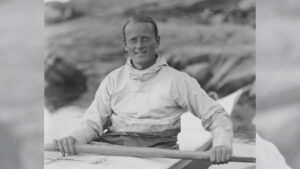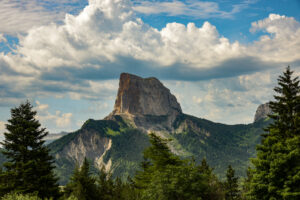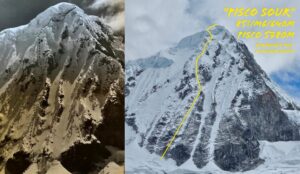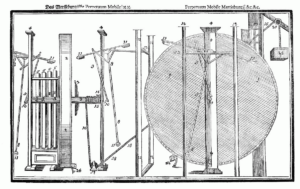Ambitious trailblazer, innovator, and adventurer; Aloha Wanderwell was born to be a star. At 16, she responded to an advertisement that cast her in travel films. In a 1918 Ford Model T, she became the first woman to drive around the globe. Later, she produced and directed historically significant travelogues. Wanderwell defied the limitations of her era.

Aloha Wanderwell. Photo: Alohawanderwell.com
The turn of the century brought modern aviation, which allowed greater freedom to explore. A fledgling film industry provided new forms of entertainment and creativity. Wanderwell –- born Idris Galcia Welsh in Winnipeg, Canada in 1906 — arrived in time to capitalize on the innovations.
After her father died in World War I, Wanderwell’s family moved to Europe. Here, she attended schools in England, Belgium, and France. In 1922, Wanderwell applied to an advertisement that launched her career.
‘Beauty, brains, and breeches’
She was 16 years old when she read “Brains, Beauty & Breeches – World Tour Offer For Lucky Young Woman…. Wanted to join an expedition… Asia, Africa…” in a newspaper. The role involved working for the Million Dollar Wager, a round-the-world endurance race of Ford Model Ts. Interviewed by Walter Wanderwell (who later became her husband), she secured a place on the team. Using her new stage name of Aloha Wanderwell, she became the face of the expedition.
The adventure was grueling, but her adventurous spirit flourished in this environment. She toured the world under a variety of titles: filmmaker, actress, seam mistress, translator.
The Ford Model T was a breakthrough vehicle that enabled middle-class people to own a car. For many households, it replaced the horse or train. Durable, simple to operate, and affordable, the Model T was among the first mass-produced vehicles. Its generous ground clearance enabled her to drive harsh, rural roads. With the Wanderwell expedition crew, she set off from France, driving through 43 countries.

Aloha Wanderwell, Egypt. Photo: AlohaWanderwell.com
Model T escapades
Wanderwell motored across Italy, Japan, the Netherlands, Palestine, Poland, Portugal, the Soviet Union, Spain, Sudan, Switzerland, Turkey, and Yemen. In India, oxen had to tow the vehicle across deep mud and rivers. In China, workers pulled the car for more than 120km when fuel was scarce.
Wanderwell braved hostility in Germany, disguised herself as a man in Mecca, and almost died of thirst in the Sudanese Desert. In Egypt, she camped at the foot of the Sphinx. She fueled her vehicle with kerosene and used bananas and elephant fat for oil. The far-flung corners of the globe that had fascinated her since childhood were now part of her daily routine. For such a free spirit, nothing could be better.

Aloha Wanderwell, India. Photo from AlohaWanderwell.com
She arrived in Hawaii, then onward to the United States. Now married, Wanderwell and her husband welcomed their firstborn — a daughter, Valri, born in Miami.
Capitalizing on her adventures, Wanderwell made films and travelogues which she showed on lecture tours.
The family then left for South Africa and welcomed a son, Nile, born in Cape Town in 1927. Then onward to the heart of Africa: Kampala, Uganda, Kilimanjaro, the Serengeti, and Nairobi.
World’s most widely traveled girl
When Wanderwell arrived back in Nice five years after first setting off, she became the first woman to have driven around the world. She became known as — or perhaps billed herself — “the world’s most widely traveled girl”.
The Wanderwells’ first documentary, With Car and Camera Around the World, showcased their travels. Through it, they became respected filmmakers. Early on, Wanderwell had simply been cast in her husband’s films. Over time, she led their production. In some, she was producer-director.
“Our motion picture editing was done in our hotel rooms. Rewinds consisted of pencils held through the hubs of reels…We would barter with local merchants and Ford dealers for gas and services in exchange for endorsing their products during our stage performance. It was a ‘finance as you go’ expedition,” said Wanderwell in a 1982 interview.
She was just warming up.
Takes up flying
Next, she traveled to the Mata Grosso region of the Amazon. In part, they were searching for Percy Fawcett, who had disappeared five years earlier. Ever the trailblazer, Wanderwell learned to fly a German seaplane and made several flights within the region. Once, their plane ran out of fuel and they had to make an emergency landing, then enlist the help of local Bororo Indians.
The South American expedition resulted in three films: Flight to the Stone Age, Last of the Bororos, and The River of Death (below).
Husband mysteriously murdered
Then Wanderwell’s life changed dramatically. Her husband was mysteriously murdered. The couple was preparing to sail to the South Seas on their 33m yacht when he was slain on board the day before departure. No one was ever charged with his murder.
In 1933, Wanderwell remarried. Her new husband, Walter Baker, became Wanderwell-Baker’s new travel and business partner. Together, they revisited Australasia and South East Asia. Their travels were full of excitement. Once, Wanderwell had to shoot her way out of an elephant stampede.
The couple’s first professional film collaboration was To See the World By Car. Then three more: Explorers of the Purple Sage, India Now, and Australia Now.
After the Second World War, she continued making films. When eventually she retired, she focused on preserving her legacy and sharing her story with the world. She was aware that what she caught on film over her lifetime was historically significant. Museums now display artifacts from her travels, and archives hold her vast collection of films and images.
Extroverted, flamboyant, iconic
Her final public lecture was in 1982 at the Natural History Museum in Los Angeles. Wanderwell-Baker dressed in full expedition regalia, as she had always flamboyantly done while presenting her films.
She died in 1996 as an icon. Men adored her confidence, women envied her bravery. Over 25 years, she had visited more than 55 countries — a vastly harder task then than now. And the travelogues she created reflected the evolution of lecture filmmaking in the early 20th century.






